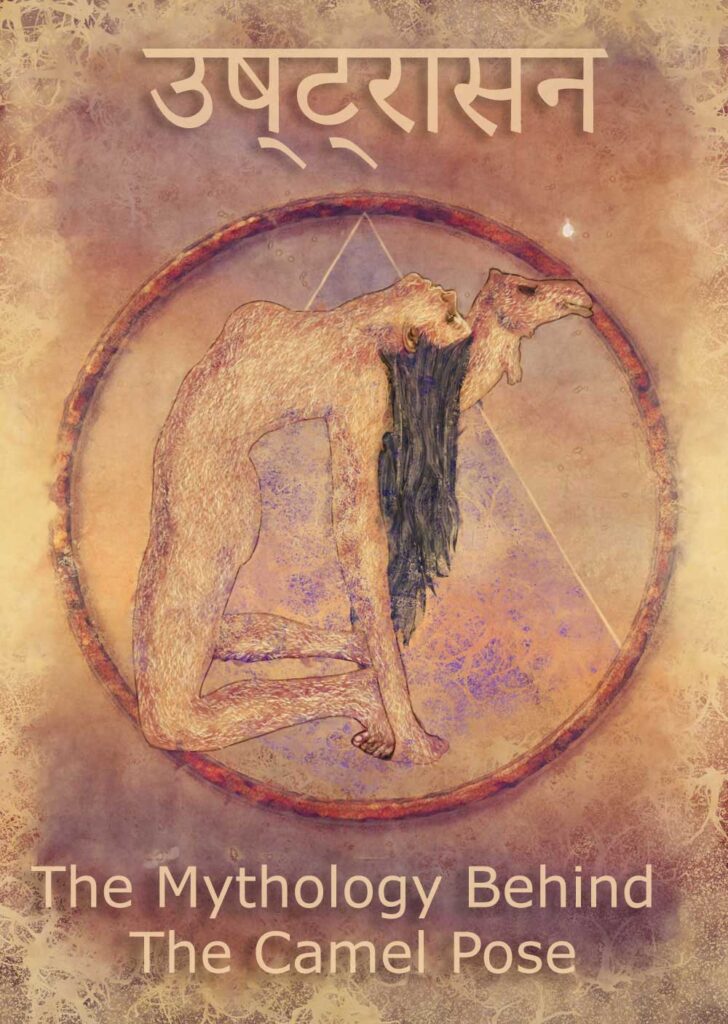
The Camel Pose, also known as Ustrasana in Sanskrit, is a popular yoga posture that is believed to have originated in ancient Indian mythology. According to Hindu mythology, Ustrasana was first practiced by the sage Vishwamitra.
As the story goes, Vishwamitra was a powerful sage who had been practicing severe penances and austerities for thousands of years in order to gain spiritual enlightenment. One day, while he was meditating in the desert, he became very thirsty and realized that he needed water to continue his meditation.
At that moment, a group of demons appeared before him and offered to help him find water. Vishwamitra agreed to their offer, and the demons took him to a nearby oasis where they showed him a magical spring of water.
Vishwamitra was overjoyed and thanked the demons for their help. However, as he was drinking the water, he suddenly realized that the demons had tricked him. The water was cursed, and he was transformed into a camel.
Despite this setback, Vishwamitra refused to give up on his spiritual practice. He continued to meditate and practice yoga, even in his new form as a camel. Eventually, he was able to overcome the curse and return to his human form.

It is believed that Ustrasana took inspiration from Vishwamitra’s transformation into a camel and his determination to continue his spiritual practice despite the challenges he faced. The pose is said to help improve flexibility, strengthen the back and shoulders, and stimulate the digestive and respiratory systems.In the context of the mythology behind the Camel Pose, the story of Vishwamitra’s transformation into a camel and his subsequent spiritual practice serves as a metaphor for the transformative power of yoga.
The practice of Ustrasana is said to activate the heart chakra, which is associated with love, compassion, and self-acceptance. By opening up the heart space and stretching the front of the body, the pose can help release emotional blockages and promote feelings of love and self-acceptance.
Furthermore, the story of Vishwamitra’s transformation into a camel and his continued spiritual practice despite the challenges he faced also serves as a reminder of the importance of perseverance and determination on the spiritual path. The practice of Ustrasana can help cultivate these qualities and encourage us to remain committed to our spiritual practice even when faced with difficulties and obstacles.
Overall, the mythology behind the Camel Pose serves as a powerful reminder of the transformative power of yoga and the importance of perseverance and self-acceptance on the spiritual path.
